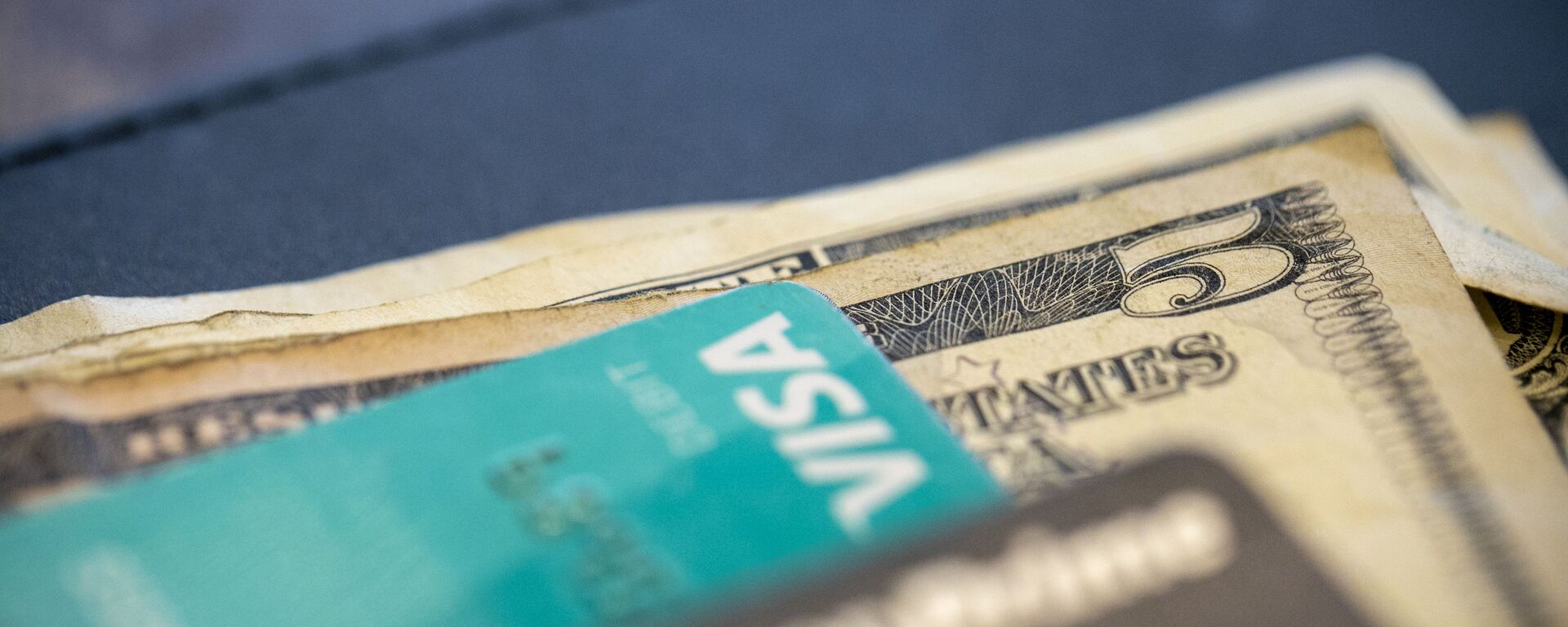https://sputnikglobe.com/20211108/us-likely-to-see-higher-inflation-from-housing-for-a-while-fed-governor-says-1090574780.html
US Likely to See Higher Inflation From Housing 'For a While', Fed Governor Says
US Likely to See Higher Inflation From Housing 'For a While', Fed Governor Says
Sputnik International
WASHINGTON (Sputnik) - The United States is likely to see greater inflation risks from record-high housing prices as demand continues to outstrip the number of... 08.11.2021, Sputnik International
2021-11-08T19:46+0000
2021-11-08T19:46+0000
2021-11-08T19:49+0000
business
us
inflation
housing
shortages
interest rates
supply chain
federal reserve
covid-19
https://cdn1.img.sputnikglobe.com/img/07e5/04/0f/1082638867_0:0:2807:1580_1920x0_80_0_0_454f3daa2a4b91b701ca511fed885c0e.jpg
“I anticipate that these housing supply issues are unlikely to reverse materially in the short term, which suggests that we are likely to see higher inflation from housing for a while,” Bowman said.Sales of new single family houses in the United States jumped 14% in the month to September as buyers tried to beat a potential hike in interest and mortgage borrowing rates despite record high home prices, Commerce Department data showed.The median selling price for existing-homes in the United States rose 17.8% in July from a year earlier to hit a record high of $359,900, according to the National Association of Realtors.The S&P CoreLogic Case-Shiller US National Home Price Index said its 20-city indicator showed a 19.7% year-over-year gain in August, barely changed from the 20% reading in the previous month.The US economy shrank by 3.5% for all of 2020 due to shutdowns and other disruptions caused by the COVID-19 crisis. Growth this year has been spotty, with an annualized 3.5% expansion in the first quarter, 3.6% in the second and 2.0% in the third.Besides uneven economic growth, the Federal Resrerve has faced three other problems. The first is inflation as wages and the prices of almost everything have soared from the lows of the coronavirus pandemic, especially pump prices of gasoline now at seven-year highs. The second is slower-than-expected employment growth, with at least 5 million of the about 21 million jobs lost last year not having returned due to conditions forced by the pandemic. The third is the continuous disruption in supply chains as the output of building materials and electronic components remains challenged.Dire housing shortages in the United States since the financial crisis of 2007-2008 and last year’s coronavirus outbreak have sent home prices to record highs.Despite the grossly inflated market and a huge mismatch of demand versus supply, many buyers remain hopeful of locking in before the Federal Reserve raises interest rates sometime next year in what would be its first hike since the COVID-19 outbreak in March 2020.
https://sputnikglobe.com/20211104/fed-chairman-vows-to-keep-us-inflation-under-control-for-those-living-paycheck-to-paycheck-1090461857.html
Sputnik International
feedback@sputniknews.com
+74956456601
MIA „Rossiya Segodnya“
2021
Sputnik International
feedback@sputniknews.com
+74956456601
MIA „Rossiya Segodnya“
News
en_EN
Sputnik International
feedback@sputniknews.com
+74956456601
MIA „Rossiya Segodnya“
Sputnik International
feedback@sputniknews.com
+74956456601
MIA „Rossiya Segodnya“
business, us, inflation, housing, shortages, interest rates, supply chain, federal reserve, covid-19
business, us, inflation, housing, shortages, interest rates, supply chain, federal reserve, covid-19
US Likely to See Higher Inflation From Housing 'For a While', Fed Governor Says
19:46 GMT 08.11.2021 (Updated: 19:49 GMT 08.11.2021) WASHINGTON (Sputnik) - The United States is likely to see greater inflation risks from record-high housing prices as demand continues to outstrip the number of newly-built homes while bottlenecks in supply chains slow construction, Federal Reserve Governor Michelle Bowman said on Monday.
“I anticipate that these housing supply issues are unlikely to reverse materially in the short term, which suggests that we are likely to see higher inflation from housing for a while,” Bowman said.
Sales of new single family houses in the United States jumped 14% in the month to September as buyers tried to beat a potential hike in interest and mortgage borrowing rates despite record high home prices, Commerce Department data showed.
The median selling price for existing-homes in the United States rose 17.8% in July from a year earlier to hit a record high of $359,900, according to the National Association of Realtors.
The S&P CoreLogic Case-Shiller US National Home Price Index said its 20-city indicator showed a 19.7% year-over-year gain in August, barely changed from the 20% reading in the previous month.
“Because housing costs are a large share of living expenses for most people, these increases are adding to current inflationary pressures in the economy,” Bowman said. “Indeed, we are already seeing sizable increases in rent and owners' equivalent rent in many parts of the country.”
The US economy shrank by 3.5% for all of 2020 due to shutdowns and other disruptions caused by the COVID-19 crisis. Growth this year has been spotty, with an annualized 3.5% expansion in the first quarter, 3.6% in the second and 2.0% in the third.

4 November 2021, 00:38 GMT
Besides uneven economic growth, the Federal Resrerve has faced three other problems. The first is inflation as wages and the prices of almost everything have soared from the lows of the coronavirus pandemic, especially pump prices of gasoline now at seven-year highs. The second is slower-than-expected employment growth, with at least 5 million of the about 21 million jobs lost last year not having returned due to conditions forced by the pandemic. The third is the continuous disruption in supply chains as the output of building materials and electronic components remains challenged.
“Before this past year, the pace of construction of new homes was below its long-run average for more than a decade," Bowman said. "The supply chain bottlenecks … are slowing down construction further. These issues affect the rental market too: The multifamily rental market is at historic levels of tightness, with over 95 percent occupancy in major markets.”
Dire housing shortages in the United States since the financial crisis of 2007-2008 and last year’s coronavirus outbreak have sent home prices to record highs.
Despite the grossly inflated market and a huge mismatch of demand versus supply, many buyers remain hopeful of locking in before the Federal Reserve raises interest rates sometime next year in what would be its first hike since the COVID-19 outbreak in March 2020.


